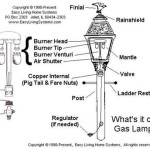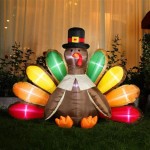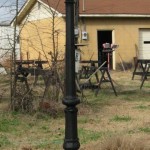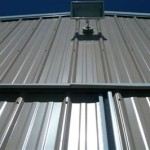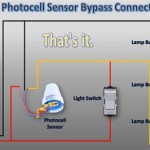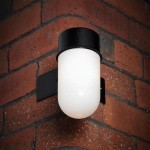Outdoor Lighting: Dark Sky Compliant
Artificial light at night (ALAN) has significantly impacted the natural environment, affecting wildlife, human health, and astronomical observation. The excessive and misdirected use of outdoor lighting contributes to light pollution, a growing concern globally. Dark sky compliant lighting aims to mitigate these negative effects by promoting responsible outdoor lighting practices.
Dark sky compliance refers to adherence to a set of principles designed to minimize light pollution. These principles focus on reducing light trespass, skyglow, and glare while ensuring appropriate illumination levels for safety and security. Dark sky compliant fixtures utilize specific design features to control light distribution, intensity, and color temperature.
Light trespass occurs when light spills onto neighboring properties, impacting residents' enjoyment of their space and potentially disrupting sleep patterns. Dark sky compliant lighting mitigates trespass through the use of fully shielded fixtures. These fixtures direct light downwards, preventing it from straying beyond its intended area. Careful placement and aiming of luminaires are crucial in minimizing light trespass.
Skyglow refers to the brightening of the night sky caused by the upward scattering of artificial light. This phenomenon obscures the stars and disrupts natural nocturnal ecosystems. Dark sky compliant fixtures minimize skyglow by directing light downwards and reducing or eliminating upward light emission. Selecting luminaires with low-wattage lamps and appropriate optics further contributes to skyglow reduction.
Glare refers to excessive brightness that causes visual discomfort and can impair vision. Dark sky compliant lighting addresses glare by utilizing fixtures with appropriate shielding and by controlling light intensity. The use of lower-wattage lamps and proper fixture placement contribute to reducing glare and enhancing visual comfort.
Color temperature, measured in Kelvin (K), plays a vital role in dark sky compliance. Higher color temperatures (above 3000K) emit a bluish-white light that contributes significantly to skyglow and negatively impacts nocturnal wildlife. Dark sky compliant lighting generally recommends color temperatures of 3000K or lower, favoring warmer, amber-toned light. These warmer tones reduce skyglow and minimize disruption to natural circadian rhythms.
Several organizations, such as the International Dark-Sky Association (IDA), provide guidelines and certifications for dark sky compliant lighting. The IDA offers a Fixture Seal of Approval program, which designates fixtures that meet stringent criteria for minimizing light pollution. Choosing IDA-certified fixtures ensures compliance with dark sky principles.
Implementing dark sky compliant lighting offers numerous benefits. Reducing skyglow improves visibility of the night sky, benefiting both amateur and professional astronomers. Minimizing light trespass respects neighboring properties and enhances community relations. Reduced glare improves visibility and safety for drivers and pedestrians.
Furthermore, dark sky compliant lighting benefits the environment by minimizing disruption to nocturnal ecosystems. Many species of wildlife rely on natural darkness for navigation, foraging, and mating. Reducing light pollution helps protect these species and maintain biodiversity.
Choosing dark sky compliant luminaires requires careful consideration of several factors. The intended application, the surrounding environment, and local regulations all influence fixture selection. Consulting with a lighting professional experienced in dark sky principles can ensure appropriate fixture selection and implementation.
Beyond fixture selection, proper installation and maintenance are essential for achieving dark sky compliance. Correct aiming and shielding ensure light is directed where needed and minimize light trespass and skyglow. Regular cleaning and maintenance of fixtures maintain optimal performance and prevent light pollution.
Increasing awareness of light pollution and its impacts has led to the adoption of dark sky ordinances in many communities. These ordinances outline specific requirements for outdoor lighting, promoting dark sky compliant practices. Checking local regulations before installing outdoor lighting ensures compliance and contributes to community-wide efforts to reduce light pollution.
Advances in lighting technology continue to expand the options for dark sky compliant fixtures. LED technology offers significant energy savings and allows for precise control of light distribution and color temperature. Adaptive lighting systems that adjust light output based on need further enhance dark sky compliance by minimizing unnecessary illumination.
The transition to dark sky compliant lighting represents a shift towards more responsible and sustainable outdoor lighting practices. By minimizing light pollution, we can protect the natural environment, improve human health and well-being, and preserve the beauty of the night sky for future generations.

A Guide To Dark Sky Outdoor Lighting 6 Quick Tips Ideas Advice Lamps Plus

Dark Sky Compliance Why Does It Matter Ledlightingsupply Com

Dark Sky Approved Outdoor Wall Lights Destination Lighting

Combat Light Pollution With Dark Sky Compliant Outdoor Lighting Solutions Cur Gli Brands

Home Decorators Collection 9 In Dark Sky Compliant 1 Light Broe Integrated Led Outdoor Wall Lantern Sconce Hd 1244 I The Depot

Dark Sky Friendly Lighting Lets You See The Stars

3 Easy Ways To Dark Sky Lighting Ideas Advice Lamps Plus

Dark Sky Spanish Revival Lights Wrought Iron Outdoor Lighting

Using Dark Sky Approved Lighting To Reduce Light Pollution

Dark Sky Approved Outdoor Wall Lights Destination Lighting
Related Posts
